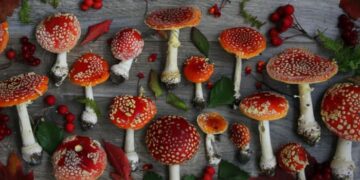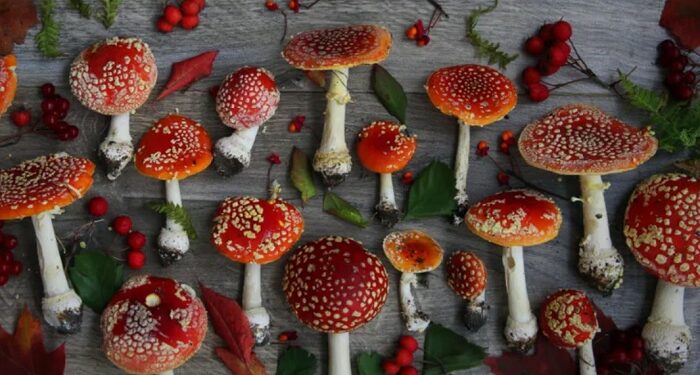Amanita muscaria, commonly known as the fly agaric, is a mushroom species renowned for its vibrant red cap with white spots. Although often associated with fairy tales and mythical stories, this mushroom has various practical applications, especially in its dried form. The use of dried fly agaric caps has found a niche in traditional medicine, wellness practices, and even in modern psychonaut communities.
Traditional and Ethnomedicinal Uses
Historically, fly agaric has been used in various cultures for its psychoactive properties. In Siberia, shamans used this mushroom for spiritual journeys and rituals, drying the caps to reduce some of the toxic components and to increase the potency of the psychoactive substances. Dried amanitas were also used in other regions like Scandinavia and Eastern Europe for their perceived medicinal benefits.
These traditional uses generally involve drying the mushroom caps, which not only preserves them for extended periods but also alters their chemical composition. When dried, the potency of the psychoactive components, primarily muscimol, is believed to increase, making the mushrooms more effective for their intended uses.
Modern Wellness and Microdosing
In contemporary wellness circles, there has been a growing interest in microdosing substances that can alter consciousness, with dried amanitas entering the conversation. Microdosing involves taking small, sub-hallucinogenic amounts of a psychoactive substance. Advocates suggest that microdosing dried fly agaric can enhance emotional, psychological, and physical well-being, though scientific studies in this area are still emerging.
The practice typically involves finely grinding dried caps into a powder, which can then be measured accurately and consumed in capsules. This method allows for precise dosages, essential for the microdosing practice, which relies on consistency and subtlety in effects. Users often report improvements in mood, creativity, and energy levels, although these effects are anecdotal and subjective.
Culinary Experiments
While not commonly used in mainstream cuisine due to its psychoactive and potentially toxic properties, fly agaric has been explored in culinary circles that focus on wild and forgotten ingredients. The mushrooms are meticulously processed—boiled multiple times with water changes—to reduce toxicity before being dried and powdered. This powder can then be used in small quantities as a seasoning or spice, bringing an earthy flavor to dishes.
Art and Dye Production
Aside from its ingestible uses, the dried fly agaric mushroom has also been employed in the production of natural dyes. The pigments in the mushroom caps can produce a range of colors from yellow to a deep red, depending on the mordant used. This makes them a valuable resource for natural dye enthusiasts who are looking to apply sustainable methods in their fabric dyeing practices.
Commercial Availability and Safety
Mushroom Mothers’ dried fly agaric caps represent a specific commercial product that taps into the niche market of ethnomedicinal and psychoactive plant products. These products are generally marketed towards those interested in traditional medicine or alternative health practices, with a focus on the purported benefits of fly agaric.
It is crucial to approach the use of dried amanitas with caution due to their psychoactive components and potential toxicity. Reputable suppliers often provide guidelines on how to use these products safely, emphasizing the importance of accurate dosing and the risks involved. It is always recommended to consult with a healthcare provider before incorporating such substances into any health regimen.
Conclusion
The application of dried amanitas is diverse, spanning from traditional medicinal uses to modern wellness practices and even into culinary experiments. As interest in natural and alternative therapies grows, so too does the curiosity around ancient, natural products like dried fly agaric. With a renewed focus on research and safety, dried amanitas might find a more prominent place in global wellness practices, albeit cautiously and within the bounds of law and science.





















